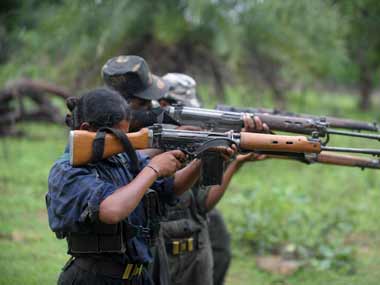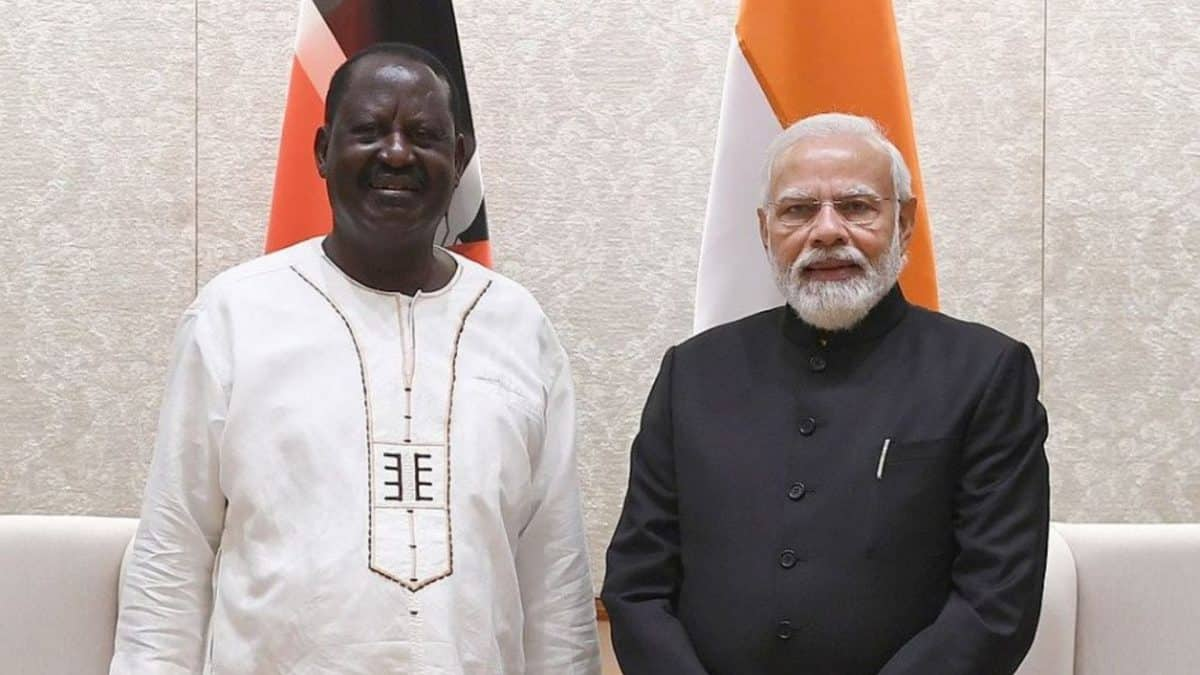In the last week of November, residents of Amalapuram in East Godavari district were surprised to see posters and flex-banners all over town ahead of a scheduled rally organised by friends of physically challenged GN Saibaba, a professor at the Jawaharlal Nehru University (JNU) in Delhi, seeking his release from jail. “Tera mundu professor, Tera venuka Maoist (Professor in public, Maoist in the background)” screamed the posters placed at prominent locations like the market, parks, bus stand and railway station. These were part of a counter-campaign of the state police and anti-Maoist special wing nicknamed ‘psy-ops’ launched last year to paralyse the front organisations of Maoist sympathisers and activists. “We have to paralyse these organisations and activists, freeze their functioning, contacts, resources and also expose their networks,” a former DGP and versatile campaigner against the Maoist violence HJ Dora had said often at his lecturers to probationers at the National Police Academy. [caption id=“attachment_4118191” align=“alignleft” width=“380”] Representational image. AFP[/caption] Political Prisoners Committee Telangana and Andhra Pradesh chapter general secretary Balla Rabindranath who led the procession and rally at Amalapuram on 27 November said: “Professor Saibaba is a local boy who had excelled in studies and also in fighting for a cause in spite of his disabilities.” Saibaba hails from Amalapuram, studied English Literature at Central University, Hyderabad and later joined the faculty of JNU at Delhi. The posters and flex banners put up by the police department aimed to take away the sympathy wave for Saibaba. He was arrested and lodged in Nagpur jail in May 2014 for being a Maoist sympathiser and released on bail in 2016 by the Supreme Court. In March this year, however, he was handed a sentence of life imprisonment. “Nowhere in the 800-page document have the Delhi High Court judges ever referred to any crime of Saibaba other than being a sympathiser,” said Rao. But the Andhra Pradesh and Telangana police are not taking any chances. They launched many such psy-ops to counter the growth of radical organisations on the ground and to stem recruitment to the armed dalams (units) of ultras living in hide-outs in rural areas and amidst forests. While the anti-Naxal commando units of Octopus did the patrolling, raids and combing operations in the forests, the civil police were asked to take up such psychological warfare on the ground to break the popular support to Maoists and weaken any support to frontal organisations. “It is the success of such operations that has yielded us local support to contain the spread of Maoists activities in rural, tribal areas and also among SC/ST and BCs,” a senior police official of the Intelligence wing at Amaravati told Firstpost. Countering the Maoists In September, police put up posters in tribal belts of Visakhapatnam to foil Maoists regrouping and enlisting the support of tribals. The police have pasted posters in villages such as GK Veedhi, Chintapalli, G Madugula and Munchingput to spread the message of goodwill and the “ill-effects” of joining the Maoist movement. On par with Maoists posters, police put up banners and posters with eye-catching designs and pictures in tribal areas to wean the tribal youth away from joining the movement. “It is a mind game with the Maoists and we are winning,” said superintendent of police (Vizag Rural) Rahul Dev Sharma. “The Adivasis support our idea and our counter-campaign is winning dividends.” The police succeeded in dissuading 23 tribal youth along with Gemmeli Kesava, son of Gemmeli Narayan Rao alias Jambri, a divisional committee member of the CPI (Maoists) of Galikonda area committee, who was killed in January 2017 in an encounter. Sources in the Andhra Pradesh state Intelligence Bureau say the ideological counter strategy, after the Ramgarh (Malkangiri) exchange of fire in the Andhra-Odisha Border (AOB) region last October, has hit the Maoist morale badly. “Though the ultras have stepped up their recruitment campaign in the AOB region, thanks to the monsoon and our ideological campaign, they have not got the desired results,” said the source. Another factor that has led to low tribal recruits on the Andhra side is the Maoists’ dependence on Khoya tribals of Chhattisgarh and Odisha, who are hostile to them. The Andhra tribals (Konda doas) feel working with those tribals was difficult and also that they would be undermined in authority and powers. These factors are highlighted by the police in their posters which now dot the tribal areas. Though the posters and flex banners are removed by Maoists, the police replace them.
“Such acts of Maoists indicate that they are worried and we are succeeding,” said AP DGP Sambashiv Rao, the creator of the poster and flex banners campaign against Maoists.
Yet another example of such ideological warfare was against building a pylon for Akkiraju Prithvi alias Munna, son of well known Maoist Ramakrishna (Akkiraju Hargopal), who headed the AOB unit until the Malkangiri encounter at his native village of Alakurapadu near Ongole town in Prakasam district of Andhra Pradesh. The police strategists put up flex banners and posters speaking of how Maoists have no respect for a Dalit activist from the region but were keen to build a pylon for Munna who had come into the movement hardly a year earlier. “Munna is just a baccha (kid) without any achievement, so why are Maoists building a pylon for him and not for the Dalit leader from the same area,” asked the posters of the police campaign. Later the pylon was demolished by the police allegedly on the popular demand of the Dalits of the village. After the October 2016 Ramgarh encounter, the Andhra DGP urged Maoists to come back to mainstream society and released a letter purportedly written by Maoists threatening suicide squads (Atmahuti Dalams) to kill top government leaders. “That letter is fake. Revolutionaries are already in the mainstream. It is the government leaders who are away from people,” said G Kalyan Rao, civil liberties leader who runs Virasam, a non-profit. As of today, barely seven of the 15-member Politburo, the highest decision-making body of the CPI (Maoist) are active, with the remaining either dead, surrendered or in jail. Similarly, only 17 of the total 33 central committee members are available through communications. They find it difficult to even meet. The top CPI (Maoist) Politburo members are as follows:
- Muppalla Laxmana Rao (aka Ganapathi), 65, general secretary.
- Prashant Bose (aka Kissanda/Manishji), 77.
- Nambala Keshav Rao (aka Basavraj/Ganganna), 55, chief of the central military commission, intelligence wing and leader of the People’s Liberation Guerilla Army.
- Misir Besra (aka Sunirmal/Commander/Bhaskar), 60+.
- Akkiraju Haragopal (aka Ramakrishna/Saket/Srinivas Rao), 64, zonal committees of Andhra Pradesh, Chhattisgarh and Odisha report to him.
- Mallojula Venugopal Rao (aka Abhay/Sonu), Kishenji’s brother, chief of the Maoists’ Dandakaranya Special Zonal Committee, spokesman of the Central Committee.
- Satyanarayana Reddy (aka Kosa/Sadhu/Gopanna).
Almost all the members of the Central Committee and the Politburo have crossed the age of 60 and many are suffering from health problems. About 14 members of the Central Committee and the Politburo such as Kobad Ghandy, Baccha Prasad Singh, Varanasi Subrahmanyam, Amitabh Bagchi, Pulendu Mukherjee alias Jhantu Mukherjee and Pramod Misra alias Madanji, who formed the core intellectual group, are in jail. Another senior Politburo member Narayan Sanyal passed away in April this year, battling cancer. Adding to the arrest and surrenders, the killing of three other Central Committee members, Mallojula Koteswara Rao alias Kishenji in 2011, Sande Rajmouli in 2007 and Cherukuri Rajkumar alias Azad in 2010, weakened the top leadership. Though the October 2016 encounter has broken the back of the CPI (Maoists), the outfit is still a big winner in rural central and western parts of India, where political awareness is still at a low ebb and jungle raj still prevails with the support of unscrupulous leaders and bureaucrats. The anti-Naxal wing of the Centre’s Intelligence Bureau and also that of Andhra Pradesh and Telangana states underscore the revival and emergence of the CPI (Maoists) challenging the power corridors in the issues of corruption, nepotism and politicisation of administration. Hence, the ideological operations against them. This is not the first time that the police have launched mind games against the ultras. In undivided Andhra Pradesh, the then DGP HJ Dora had countered the Praja Natya Mandali (cultural wing of People’s War Group) with an outfit titled Jana Natya Mandali. This wing went around the Naxal areas and performed stage plays highlighting the dangers of supporting the ultras and advantages of state development works. “In the days when tribals and villagers influenced by Maoists had stopped even road work, bridges and electrification, our campaigns changed the mindset of people,” said Dora. In Telangana area too the police have launched such efforts. The police organise medical camps, distribute free grains to families of Maoist activists, support weddings and school education of their children. “Through all such campaigns we succeeded in getting largest surrenders of top guns including CC (Central Committee) and PB (Politburo) members and bring down violence and quality of the movement in Telangana districts,” said present Telangana DGP Mahender Reddy. As a security expert who preferred not to be named put it, ideas are more effective than bullets. “We can wean away the popular support to ultra and terrorist movement through campaigns. What matters is commitment and timing in the campaigns. The police of Andhra Pradesh and Telangana seem to be successful in playing mind games with Maoists as long as the old guard which holds on to some ideology are still around. But how long can these mind games work when hardcore militant and cut-throat younger elements take charge at the helm is the moot question,” he said.


)




